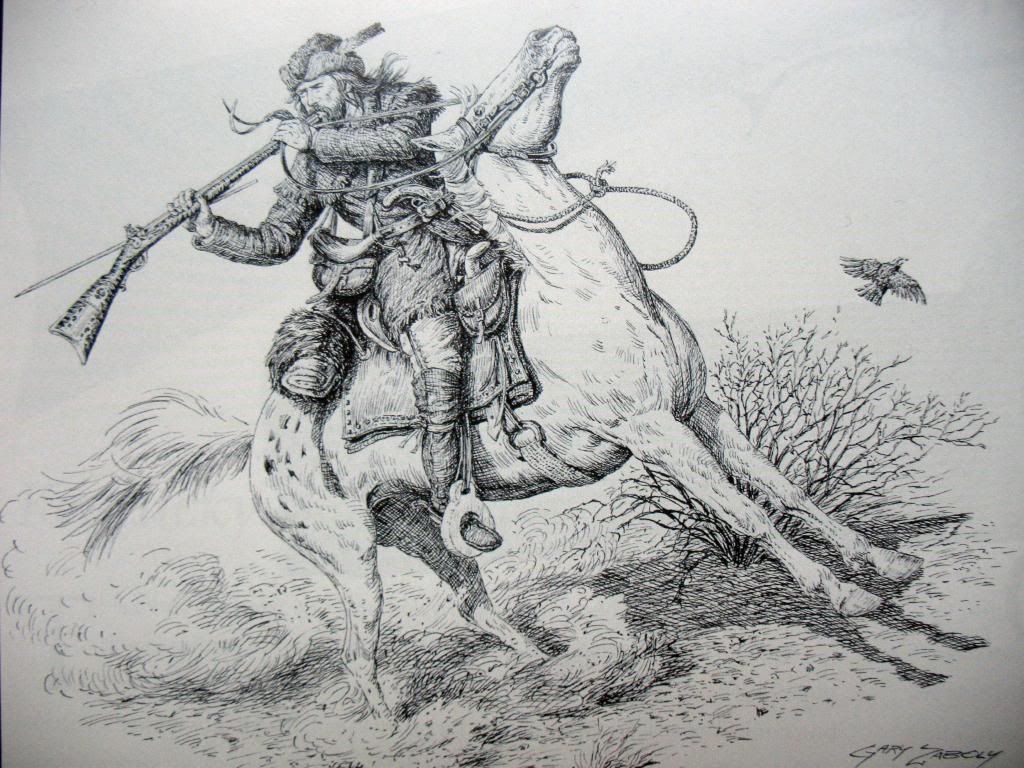TexiKan
40 Cal.
- Joined
- Jan 2, 2005
- Messages
- 542
- Reaction score
- 151
Imagine my surprise on seeing a Gary Zaboly sketch (2010) on page 116 of the book "The Alamo and Beyond" by Phil Collins. What caught my attention is the sketch shows a man on horseback with the muzzlel of his rifle in his mouth. The description states: "Fast-Loading by placing rifle or musket balls in the mouth was a technique long used on the American frontier-going back to colonial times-by both frontiersmen and hunters, and sometimes soldiers. At the Battle of San Jacinto in 1836, many Texians loaded this way as they advanced against General Antonio Lopez Santa Anna's breastwork."
I was not aware of this practice but after all of the "blowing down the barrel" controversy (which I do not want to reignite!) I was surprised to learn of this particular technique!
I was not aware of this practice but after all of the "blowing down the barrel" controversy (which I do not want to reignite!) I was surprised to learn of this particular technique!







